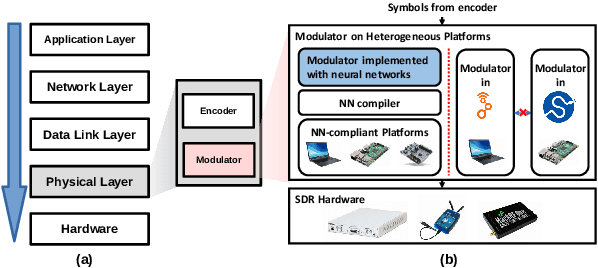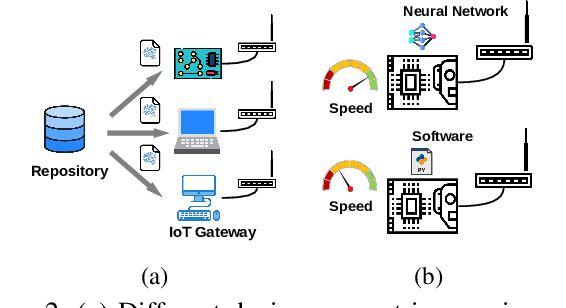NN-Defined Modulator: Reconfigurable and Portable Software Modulator on IoT Gateways
Paper and Code
Mar 14, 2024



A physical-layer modulator is a vital component for an IoT gateway to map the symbols to signals. However, due to the soldered hardware chipsets on the gateway's motherboards or the diverse toolkits on different platforms for the software radio, the existing solutions either have limited extensibility or are platform-specific. Such limitation is hard to ignore when modulation schemes and hardware platforms have become extremely diverse. This paper presents a new paradigm of using neural networks as an abstraction layer for physical layer modulators in IoT gateway devices, referred to as NN-defined modulators. Our approach addresses the challenges of extensibility and portability for multiple technologies on various hardware platforms. The proposed NN-defined modulator uses a model-driven methodology rooted in solid mathematical foundations while having native support for hardware acceleration and portability to heterogeneous platforms. We conduct the evaluation of NN-defined modulators on different platforms, including Nvidia Jetson Nano and Raspberry Pi. Evaluations demonstrate that our NN-defined modulator effectively operates as conventional modulators and provides significant efficiency gains (up to $4.7\times$ on Nvidia Jetson Nano and $1.1\times$ on Raspberry Pi), indicating high portability. Furthermore, we show the real-world applications using our NN-defined modulators to generate ZigBee and WiFi packets, which are compliant with commodity TI CC2650 (ZigBee) and Intel AX201 (WiFi NIC), respectively.
 Add to Chrome
Add to Chrome Add to Firefox
Add to Firefox Add to Edge
Add to Edge